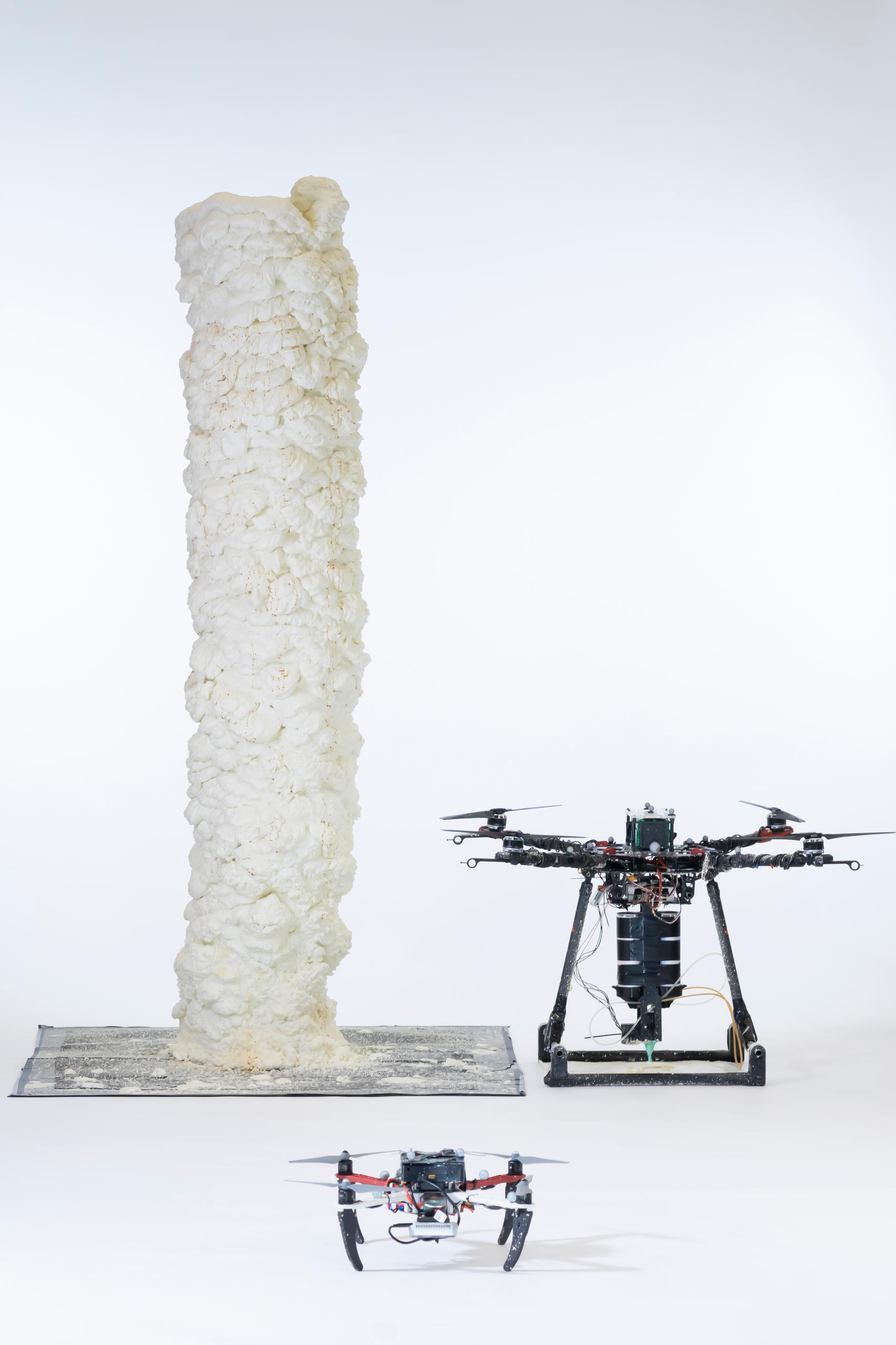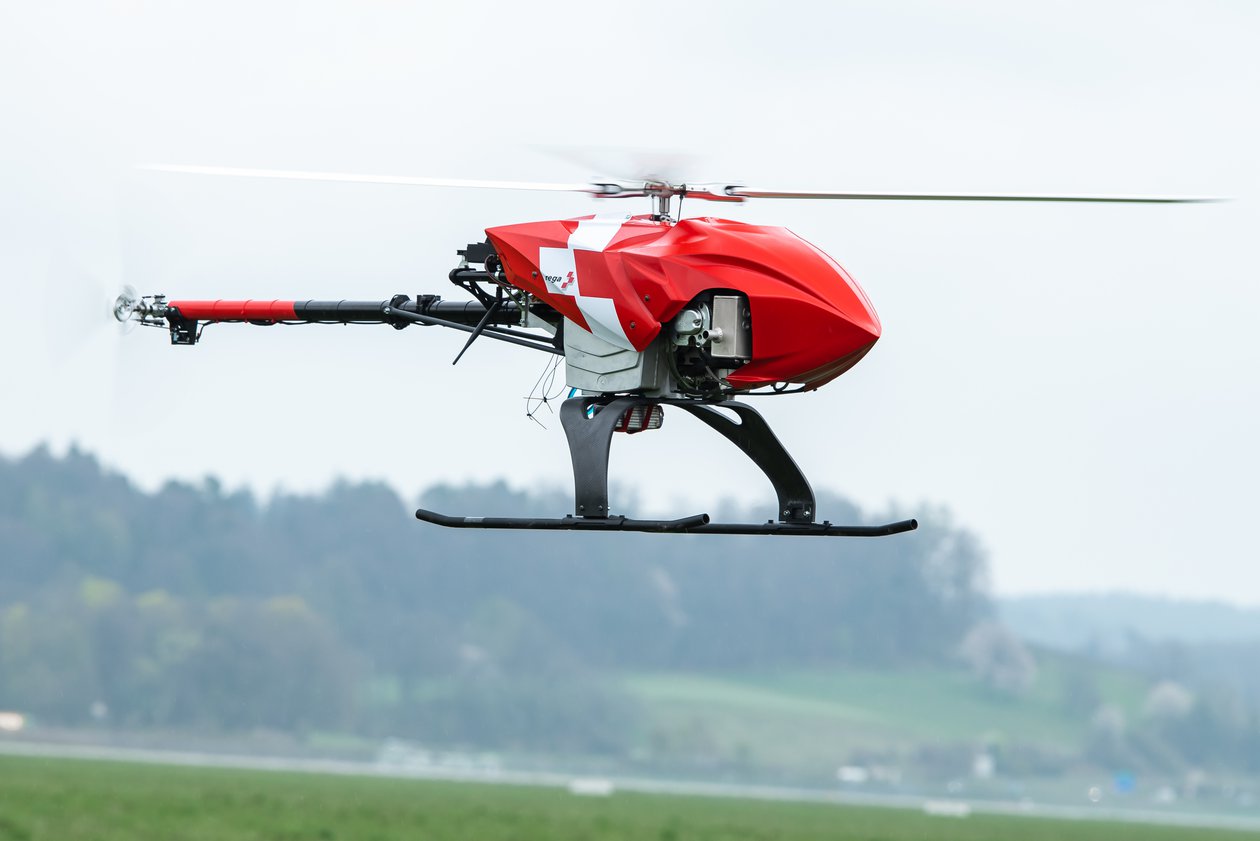
Scientists develop swarm of 3D printing drones

An international team of researchers has created a fleet of bee-inspired drones that work together to 3D-print structures while flying. It is hoped the technology could be used in challenging post-disaster construction scenarios or to carry out repairs to buildings that are hard to access.
The new 3-D printing approach was led by scientists from Imperial College London and the Swiss Federal Laboratories for Materials Science and Technology (EMPA) who developed the drones that use collective building methods inspired by bees and wasps.
When working together so-called “BuilDrones” deposit materials during flight, while quality-controlling “ScanDrones” continually measure the BuilDrones’ output and inform their next manufacturing steps. The drones are fully autonomous in flight, but their activities are monitored by a human controller who checks progress and intervenes if necessary, based on the information provided by the drones.
“We’ve proved the concept that drones can work autonomously and in tandem to construct and repair buildings, at least in the lab. This scalable solution could help construction and repair in difficult-to-reach areas, like tall buildings,” saidExternal link lead researcher Mirko Kovac of Imperial’s Department of Aeronautics and EMPA’s Materials and Technology Centre of Robotics. The team published their workExternal link in Nature on September 21.
3D printing is becoming more popular in the construction industry. Both on-site and in the factory, static and mobile robots print materials for use in construction projects, such as steel and concrete structures.

To test the concept, the researchers developed four cement-like mixtures for the drones to build with. During the construction phase, the drones assess the printed geometry in real time and adapt their behaviour to ensure they meet the build specifications, with manufacturing accuracy of five millimetres.
The proof-of-concept work included a 2.05-metre cylinder (72 layers) with a polyurethane-based foam material, and an 18-centimetre cylinder (28 layers) with a custom-designed structural cement–like material.
The researchers plan to work with construction companies to validate the technology, which they believe will provide significant cost-savings and reduce access risks compared to traditional manual methods.
The Swiss-UK team collaborated with scientists from the University College London, the University of Bath, the University of Pennsylvania, the Queen Mary University of London, and the University of Munich.

More
Swiss drones to the rescue!

In compliance with the JTI standards
More: SWI swissinfo.ch certified by the Journalism Trust Initiative






























You can find an overview of ongoing debates with our journalists here . Please join us!
If you want to start a conversation about a topic raised in this article or want to report factual errors, email us at english@swissinfo.ch.